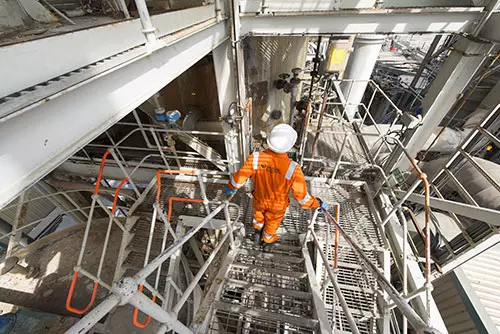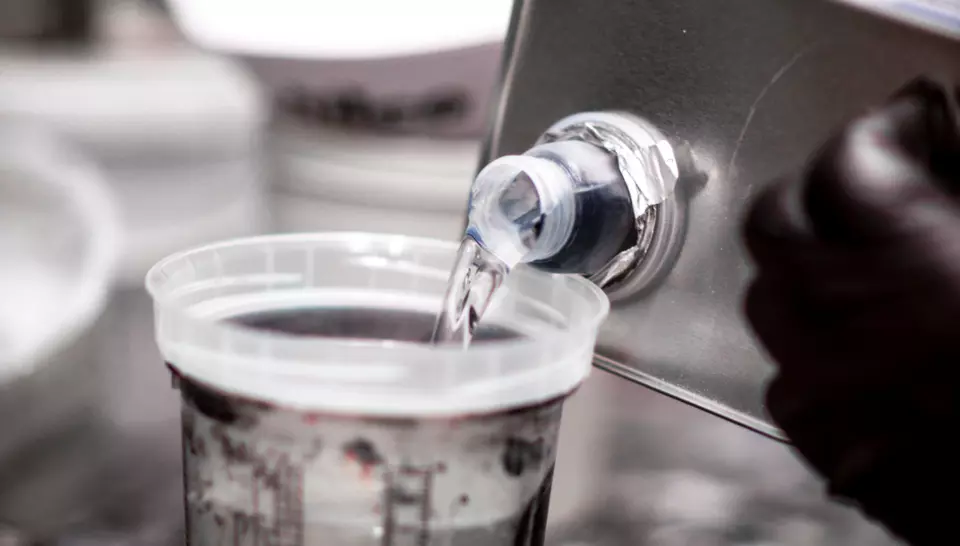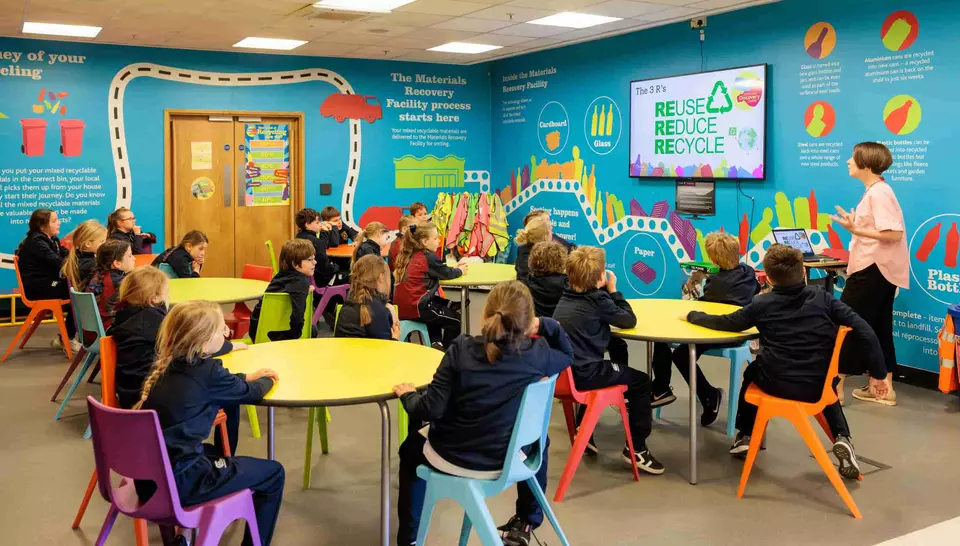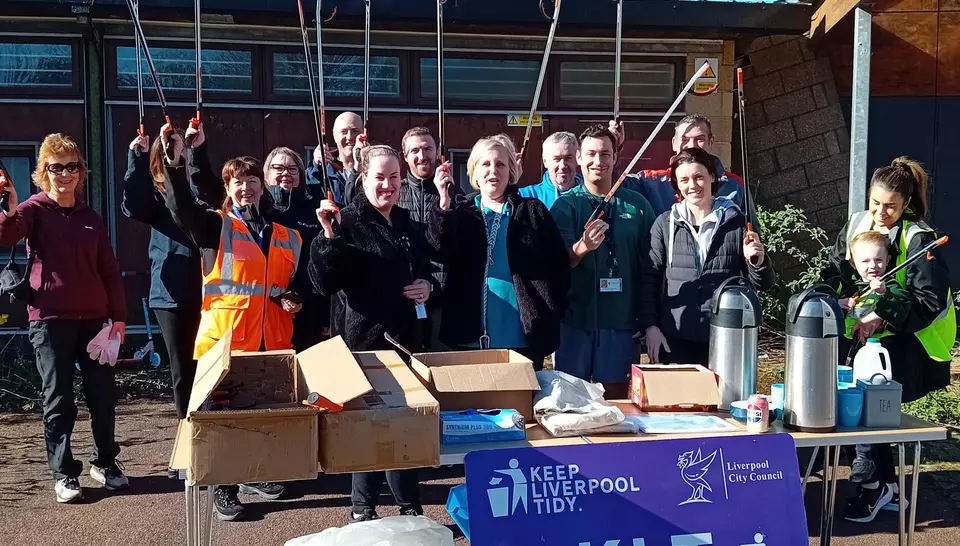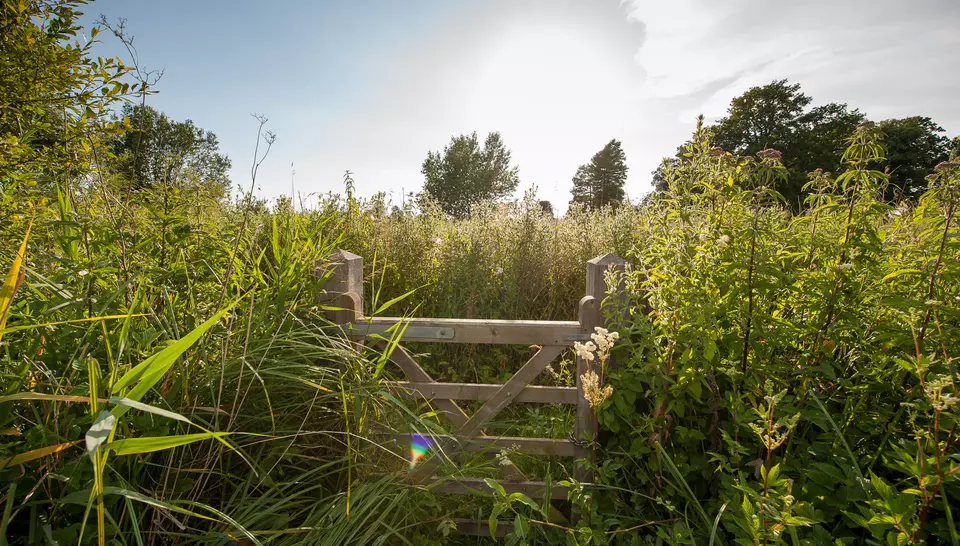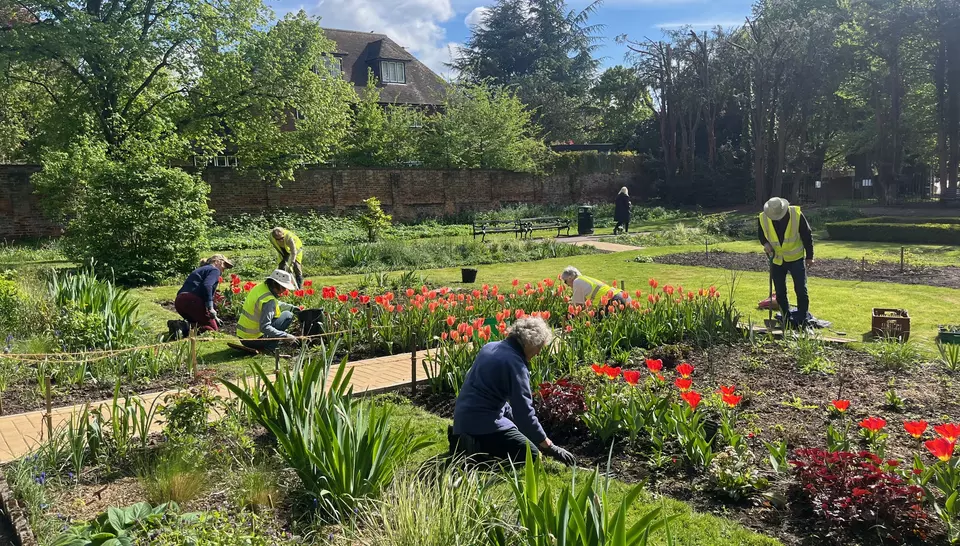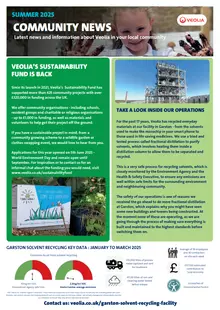What we do at Garston Solvent Recycling Facility?
Veolia recycles everyday materials - from the solvents used to make the microchip in your smartphone to those used in life-saving medicines.
We use a tried and tested process called fractional distillation to safely purify and recycle solvents.
Our process:
- Testing and preparation: Material arrives at the facility and is sampled in our laboratory to check its specification. It's then loaded into feed tanks ready for recovery.
- Distillation: Solvents are heated inside distillation columns, allowing them to be separated and purified. Pure solvent is separated from contaminants by our specialist distillation team.
- Quality assurance: Once the distillation process is complete, the recycled material is analysed in our laboratory to ensure it meets the required standards.
- Ready for reuse: The recovered material can be used again to make new products in industries such as pharmaceuticals, agrochemicals and specialised paints.
Veolia in the Community
Protecting our planet takes every effort, big and small, from each of us.
At Veolia, we believe in investing and supporting the community that we operate within.
Find out more about the support available to the Garston community through our initiatives.
How can we be sure the facility is safe for the local community?
Veolia has operated the Garston Solvent Recycling Facility since 2008 and maintains an excellent safety record, which is achieved through rigorous processes and ongoing monitoring throughout every step of our operations. The facility is highly regulated and fully complies with the COMAH regulations overseen by the Health & Safety Executive and the Environment Agency.
We also conduct regular air, water and noise monitoring, which we report on a quarterly basis. Prior to submitting our most recent planning and permit application with Liverpool City Council, a number of technical assessments were carried out to look closely at potential impacts - including cumulative impacts - from the facility. These assessments, which can be found at the Council’s planning applications portal, have been consulted on with the Environment Agency, Merseyside Environmental Advisory Service, Natural England, HSE and the Council’s own internal services (such as Highways and Environmental Health).
I have heard about alarms going off, does this mean there have been safety issues?
Our safety systems are monitored around the clock by an onsite team. We are sorry for any disturbance caused in May 2025 by the case of an alarm going off during the night. This was the general site alarm that was falsely triggered in the staff kitchen and resetting it took longer than it should. We have investigated why the resetting was slow to ensure this isn’t the case again. However, we also use alarm-like bells for system control. These bells are not emergency alerts and have been assessed to confirm that they would not cause a nuisance to people living nearby, though they may be audible at or near the site perimeter.
Why did a vehicle enter a residential street?
We apologise for the incident where one of our vehicles took an incorrect route through the residential area. The driver, who was unfamiliar with the area and visiting the site for the first time, made a wrong turn which led him onto a restricted street. Finding himself in this situation, he needed to locate a safe area with sufficient space to turn his HGV around, which unfortunately required him to drive through the housing estate. We have spoken with the driver to ensure he is now fully aware of the correct route to avoid this happening again.
All drivers receive site induction training which includes route guidance, and this driver will be going through the induction process again as a precautionary measure. We have reached out to Liverpool City Council to explore how improved signage might help prevent similar incidents in the future.
If you self-report your results, does this mean you are marking your own homework?
We want to assure you that our monitoring process involves independent checks. While we do carry out internal monitoring as part of our operations, we also commission an independent MCERTS accredited company to ensure objectivity.
The results are then compiled and an external report is submitted to the Environment Agency. This means the data is independently verified and overseen by the regulatory body, who ensure we remain compliant with all requirements. We believe it's important to be transparent and share this monitoring data with you as part of our commitment to keeping the community informed about our operations.
I have heard that the recycling done at Garston produces some odours. What is causing that?
That’s a good question! This is something that we really want to clear up with people living in the nearby area as we have conducted extensive research and testing into each and every report we have received. All of the tests have shown that the reported odours have not come from the Veolia recycling facility at Garston. We have been extremely thorough in conducting these tests in an effort to get to the bottom of these reports, and all have reached the same clear conclusion. Veolia has cooperated fully with the Environment Agency and Liverpool City Council to ensure that any emissions from our recycling facility at Garston are well within safe limits.
We live quite close to the Veolia facility at Garston, and have been told there’s a three kilometre blast zone because of the flammable materials being processed on site. How can this be allowed so close to people’s homes?
Put simply, there is no such area or zone around our recycling facility at Garston. We do not use incinerators or co-incinerators, and all of our processes and materials pass stringent tests laid out by the Environment Agency and the Health & Safety Executive to ensure they are safe. In 2024 we overhauled the site’s steam boiler so that it can run on fuel produced as part of the on-site recycling process. This has reduced our use of gas by 12GWh per year - that’s about the same amount of gas used to power 1,000 or more households in the UK.
Community News
Health and Safety
The facility has been awarded the following accreditations: ISO 9001, ISO 14001, OHSAS 18001 and ISO 22301
We work to exacting standards. All of our facilities are fully permitted and have gained these accreditations with hard work and safe practices. All sites have comprehensive systems that trace your waste from ‘cradle to grave’.
Not only this, Garston’s on-site laboratory facilities offer full analysis of waste before collection and on arrival, ensuring legal compliance.
The facility is regulated by both the Environment Agency and the Health & Safety Executive.
You can view our Hazardous Waste Duty of Care information by clicking here.
